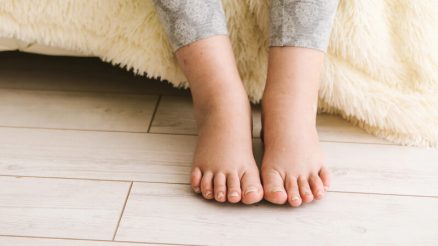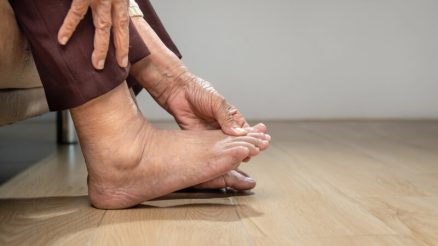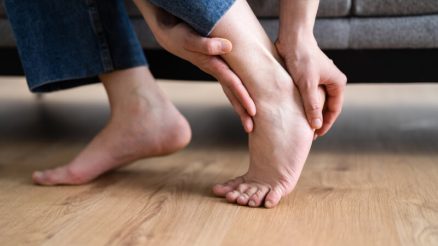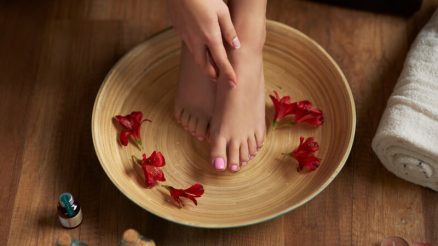Exercises | Benefits | Prevention
A bunion, also called hallux valgus, is a bony bump that forms at the base of your big toe, causing it to point inwards towards the other toes. Bunions are a very common feet problem affecting lots of people. 26% of people between 18 and 65 suffer from bunions while for those above 65 years, 36% are affected.
Bunions are known to be hereditary, but other factors such as wearing constrictive shoes and lack of proper feet or toe exercises contribute to bunions. Bunions can lead to other problems such as calluses because as you walk, bunions carry the exerted pressure instead of the ball near your big toe.
This causes your bunions to become very painful as you put pressure on them. It can also lead to the development of calluses. Bunions cause a lot of discomfort and pain, which can be relieved either using medication, surgery or through exercises.
We’ll focus on simple exercises that you can carry out at home to relieve your bunions and prevent them from developing further.
Here are 14 Simple Yet Effective Exercises for Bunions
1. Toe Stretches
Toe stretches involve stretching muscles in the arch and heel of your foot. Be seated upright on a chair with your feet on the floor. Place one foot on the thigh of the other leg. Hold your toes with one hand and keeping your foot steady with the other hand. Stretch the toes towards your ankle, pulling them as much as possible but ensuring you are comfortable.
You should feel your muscles in the arch and heel stretch. This exercise keeps the muscles under your toes strong and also prevents plantar fasciitis.
2. Stretch Your Big Toe
Stretch your big toe by holding it with one hand and keep your foot steady with the other. Pull your toe so that you align it properly as it should be and hold that position for 10 seconds. Stretch the toe in all directions severally; up, down and to the sides. Repeat three times and switch to the other foot.
3. Toe Spreads
Toe spreads are great exercises for increasing mobility and control of your toe muscles and joints. Sit upright on a chair, with your feet resting on the floor for starters. Spread all your toes apart as much as they can go without any strain and hold that position for about 5 seconds. Do 10 repetitions.
Put a rubber band around your toes to increase resistance. This exercise can be performed on both feet at the same time or alternate between feet, whichever is comfortable for you.
4. Toe Circles
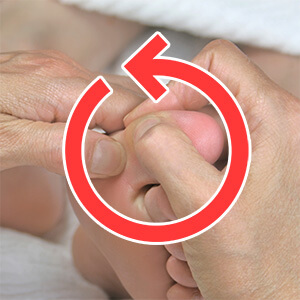
Start by sitting on a chair with your feet on the ground. Bend forward so you can reach your toes and with one hand holding your big toe and the other your foot to ensure it is steady. Rotate the big toe in circles clockwise going for about 20 repetitions clockwise and another 20 anticlockwise.
Switch to the other toe. These are great for increasing mobility and flexibility at the bunions.
5. Figure 8 Rotations
Start in the same position as if you were doing toe circles. Instead of moving your toe in a circular motion, move it in a figure 8 kind of motion. Push the toe down and then up while moving it from left to right and then without stopping move it down and then up while moving from right to left to the starting position.
Repeat that motion 15 times on one toe and switch to the other. This is great for flexibility and stronger toe muscles. It also keeps your joints in line.
6. Flex and Contract
Sit on a chair to perform this exercise, but have something that can prop your feet upwards slightly like a box or a ball. Place one foot on the box and curl your toes inwards. Squeeze your toes inwards as much as you can and hold the position for 5 seconds. Release and then move your toes upwards.
Push them upwards as high as you can go and again hold for 5 seconds. Repeat on the other foot. This exercise helps muscles to relax and also strengthens them.
7. Heel Raises
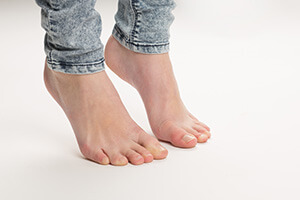
Start with your feet on the ground from a seated position, and raise your heels of the foot up until only the balls of your feet are touching the floor. Hold for 5 seconds and then return the foot to the ground gently. Do 10 repetitions and repeat with the other foot. This stretches the muscles and joints.
8. Resistance Exercises
Resistance exercises are best performed with the help of either a towel or a belt. Wrap a towel around your big toe and gently pull the towel towards you while at the same time pushing your toe downwards on the towel. Hold for about 5 seconds and change. Do 15 repetitions in one day.
9. The Golf Ball Roll
Sit upright on a chair with your feet placed on the ground. Place a gold ball or tennis ball near your feet. Place one foot on the ball and press hard enough but ensure you are comfortable. Roll the ball forward and backward while pressing on it. Do this for two minutes on this foot and switch to the other one.
Repeat the procedure on the other foot for two minutes. This exercise can help relieve pain in the arches of the foot. It also presses on the pressure points on your feet, stimulating and relaxing your body while increasing blood flow to the joints and improving flexibility at the bunion.
If you do not have a ball, you can improvise by using a bottle that is full of frozen water.
10. Assisted Toe Abduction
Place your foot on the floor and try to move the toes outwards. The four small toes go to one direction and the big toe to the other direction. This exercises increases mobility and also prevents bunions if they are trying to form.
11. Picking up Marbles

Pick up marbles as a form of exercise that is easy but very effective at increasing the flexibility of your toes, especially at the bunion. It also increases strength of the muscles under your feet and on the toes. Sit upright on a chair with your feet on the ground to engage in this exercise.
Place an empty bowl and some marbles on the floor; start off with 30 marbles. Pick the marbles, one by one from the floor with your feet by curling your toes and place them in the empty bowl. Repeat with the other foot.
12. Towel Toe Curls
This is another exercise that keeps your toes very flexible at the joints. Start by sitting upright on a chair with your feet on the floor. Place a small towel in front of your feet. Curl your toes around the towel while holding it and pull towards you.
Hold the cloth at the top position for a couple of seconds and return it to a starting position. Do 10 or 15 repetitions on one foot and switch to the other. This exercise also strengthens the tibialis anterior muscle, which is located at the base of your big toe and runs through the arch.
13. Walking on Sand
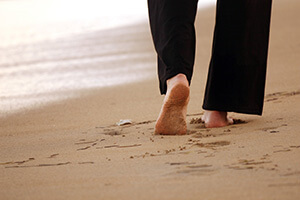
Walk barefoot on sand to help relieve bunions. As you walk on the sand, its particles are hard and therefore give your foot a good massage, improving circulation and causing relaxation.
Also, the surface of sand is forgiving and therefore walking on it requires that you put some extra force to propel your body forward. This strengthens the toes and their muscles.
14. Foot Massage
A foot massage is imperative in taking care of bunions because it helps in adjusting your muscles and tendons. A massage helps to relax your muscles and tendons in your foot, releasing tightness responsible for causing bunions or makes them worse. A foot massage also removes tension and increases circulation of blood and lymph in your foot, relieving bunions.
What are the Benefits of Exercises?
Feet exercises for people with bunions are important because they help to make muscles of your feet stronger so they can provide you better support. Bunions become worse as time goes by, but the exercises can help you stop their development to advanced stages. They help your joints and ligaments regain normal posture.
Exercises are also important because they improve your flexibility and mobility at the toes, reducing pain as you move. Exercising your feet increases blood circulation and also circulation of the lymph, which nourishes your muscles and keeps them relaxed, giving you relief.
Can Stretching Exercises Help Prevent Bunions?
Stretching exercises can prevent bunions if they are done regularly before bunions form. If the bunions have already formed, they cannot be corrected by the exercises, but only relieved from symptoms.
When the exercises are performed regularly, they ensure your joints are in the right positioning while also keeping your muscles strong and resisting formation of bunions. This should also be enhanced by wearing the right kind of shoes and avoiding activities that can lead to bunion formation.
Sources:
MoveForwardPT, Physical Therapist’s Guide to Bunion (Hallux Valgus)
Youtube (ACTIV CHIROPRACTIC), 6 Exercises to Fix Bunions





